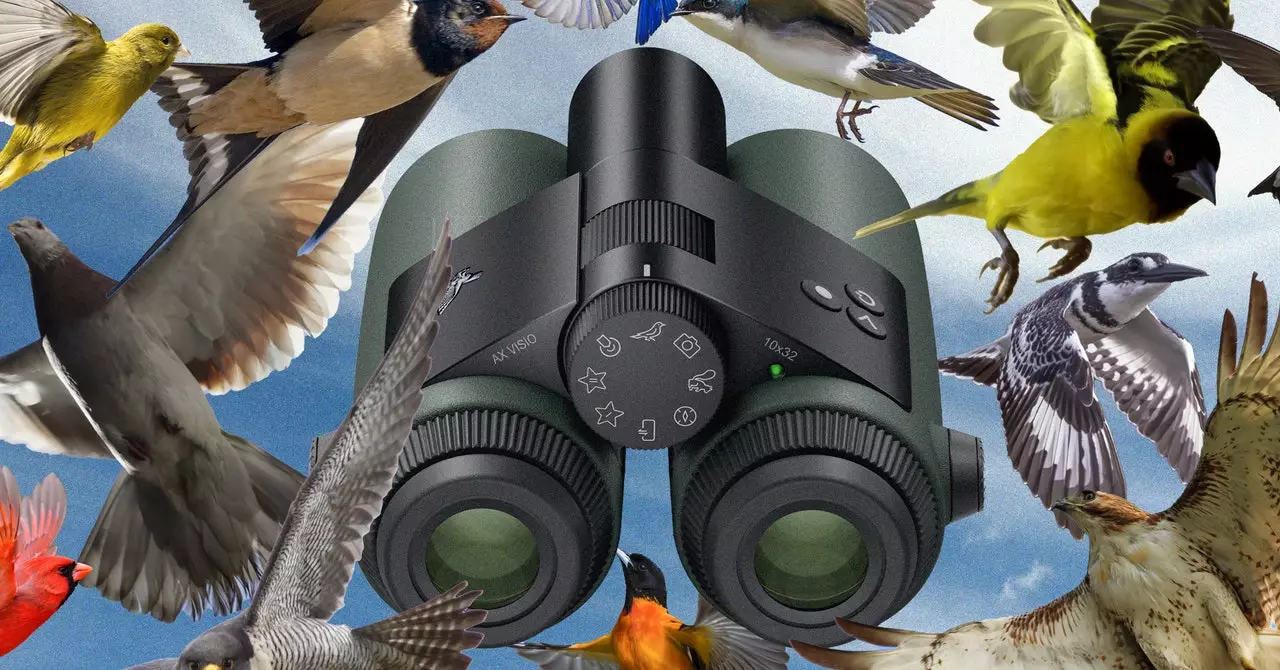With the evolution of technology, our approach to birdwatching has transformed remarkably, merging traditional techniques with advanced machinery. The emergence of devices like the AX Visio binoculars offers enthusiasts not only enhanced viewing experiences but also the capability to identify species utilizing cutting-edge identification software. This article delves into how these binoculars function, their unique features, and the implications they have for wildlife observation.
At the core of the AX Visio binoculars lies sophisticated identification software supporting various identification settings that cater to different classes of wildlife. The Bird ID function employs a modified version of the Cornell Lab of Ornithology’s Merlin Bird ID database—a renowned and comprehensive resource within ornithology circles. Meanwhile, the Mammals, Butterfly, and Dragonfly ID settings operate on the reliable Sunbird database, expanding their primary utility to a diverse range of species.
One notable advantage of the Bird ID capability is its global reach. Unlike mammal and insect identifications, which are currently limited to Europe and North America, the bird identification software encompasses almost every corner of the globe, including even the remote expanses of Antarctica. This comprehensive geographic coverage is largely facilitated by the integrated GPS sensor, which helps the device ascertain the user’s location, thus fine-tuning the species identification to the area.
Being an amateur birdwatcher and having the chance to test the AX Visio at andBeyond Phinda Private Game Reserve in South Africa was an enlightening experience. Initially, there is a level of apprehension that comes with using technology-driven binoculars. Often, enthusiasts reckon they might find the intricate controls daunting or the identification process cumbersome. However, upon using the AX Visio, I discovered a remarkably intuitive design.
The binoculars feature a straightforward mode-selection wheel positioned on the bridge of the device, allowing for easy toggling between various identification modes. These modes encompass a variety of wildlife categories, including birds, mammals, and insects, as well as a photography setting. This design holds significance for users who may not be technologically savvy and provides a seamless transition between observational methods.
A critical aspect of effective wildlife observation is ensuring that the device is stable and focused appropriately. The AX Visio assumes this responsibility with a simple visual cue. When aimed at a potential subject, a red circle appears, directing the user’s attention and requiring the animal to largely fill this circle for optimal identification. This visual feedback significantly eases the process of tracking and confirming the species being observed.
During my field test, the experience was overwhelmingly positive. For instance, the AX Visio successfully identified a malachite kingfisher that was perched 30 meters away—a true testament to the capabilities of the identification software. However, the system isn’t infallible. There were occasions when the binoculars recognized visible birds but still failed to provide a name, illustrating that while the technology is impressive, it has limitations.
A 9-inch bee-eater, for example, evaded successful identification, despite being clearly visible 100 meters away. Such shortcomings can be frustrating, especially for dedicated birdwatchers who often find joy in spotting and identifying diverse species.
The AX Visio binoculars represent a significant shift not only in how birdwatchers engage with their hobby but also in promoting awareness about the importance of conservation. By renting these advanced binoculars, visitors at the private game reserve contribute to local conservation projects—a critical benefit in areas where wildlife preservation is essential.
Furthermore, as technology continues to permeate the realm of nature observation, we can anticipate a future where more enthusiasts can engage in responsible wildlife watching while generating support for conservation efforts. The AX Visio binoculars highlight a pivotal intersection of passion, technology, and environmental stewardship, potentially redefining how we interact with the natural world.
As an ardent advocate for nature observation, the journey with the AX Visio binoculars has opened my eyes to the potential of technology in enriching our understanding of wildlife. While there are challenges associated with the limitations of identification accuracy, the overall experience embodies a promising avenue for both seasoned birdwatchers and novices alike. The integration of user-friendly design with advanced identification software positions these binoculars as a critical tool for enhancing appreciation and awareness of the avian world around us.


Leave a Reply
You must be logged in to post a comment.